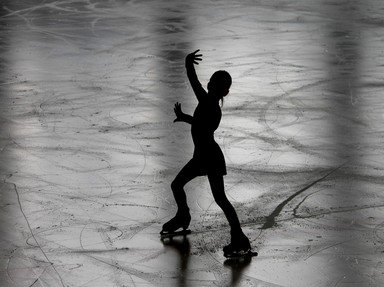Quiz Answer Key and Fun Facts
1. Canadian Brian Orser was expected to win Gold at the 1988 Calgary Olympics but he lost to American Brian Boitano. What reason do many fans attribute to his loss?
2. How many rotations are made in a Quadruple Axel?
3. Only 15 at the time of her Olympic Gold Medal in 1998, what female figure skater moved to Professional Skating immediately after Nagano?
4. A Camel Spin is performed when which of the following is stretched above your hip?
5. Scandal erupted in the judging panel in the 2002 Olympic Winter Games in Salt Lake City during which event?
6. What male skater from Canada retired from figure skating after three Olympic appearances only to move into Martial Arts?
7. The Death Spiral can only be performed in Pairs skating.
8. In 1994, Tonya Harding was allegedly involved in the attack on what fellow female figure skater?
9. What name is used for the jagged teeth found on the front of a figure skate blade?
10. Which of these is not allowed in Ice Dancing?
Source: Author
kyleisalive
This quiz was reviewed by FunTrivia editor
stuthehistoryguy before going online.
Any errors found in FunTrivia content are routinely corrected through our feedback system.

